

Blackjack is a cornerstone of well-established land based casinos in the Canada, and the same holds true for online blackjack on Prime Casino.
Online blackjack affords players worldwide the opportunity to promptly take a seat at a digital table and initiate gameplay. The absence of seat wait times, coupled with the player's exclusive engagement with the RNG computerised dealer, allows for personalised gaming that is out of the ordinary.
We boast an unrivalled selection of casino table games, like online blackjack, created by the industry's leading developers. Additionally, for those seeking a more socially interactive blackjack experience, live blackjack is also available. With various types of online blackjack, unique side bets, and strategies to explore, enhancing your blackjack skills (without going over 21!) is a journey worth pursuing and one that won’t disappoint.
Play online blackjack for fun or read on to discover more about the game and our related offers.
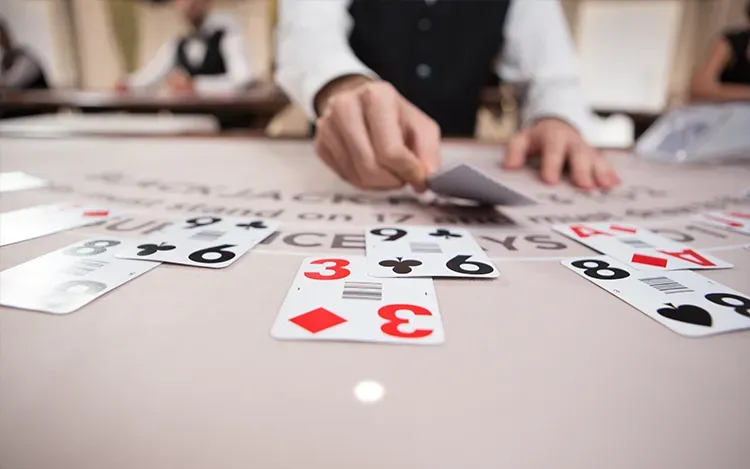
| No. of online blackjack games | 170+ |
|---|---|
| Do you have live dealers? | Yes |
| Online blackjack games you can play | American, European, Speed, Lightning, etc. |
| Known online blackjack game providers | GVG, Merkur, Playtech, Evolution, Pragmatic |
|---|---|
| Recommended online blackjack games | Blackjack by Evolution, Playtech Live Blackjack Lobby |
You’ll find our selection of over 50 online blackjack games under the card and table games section of our games lobby. Browse the available games and pick the one that appeals to you.
Decide on how much you’d like to wager and enter your bet using the bet selection menu. Be sure to set yourself a time limit and a budget for your blackjack session. When you’re happy with the wager, it's time to play.
You will be dealt two face up cards and the dealer will be dealt two cards one face up and one face down. The aim of the game is to be the person with a total value of cards that is higher than the dealer. The highest value players can achieve is 21, (known as blackjack) and if your cards total over this you will go bust and forfeit the round.
You’ll next need to decide whether you want to hit (receive another card) or stand (receive no more cards). There are also options to split or double down. The number displayed on the playing card is that card's value. All royals in blackjack are valued at 10. An ace can be worth 10 or 1 with its value becoming the latter when its higher value would cause a player to bust.
Unless otherwise specified, the house rules dictate that the blackjack dealer must hit when their cards total 16 or lower and must stand if they total 17 or higher. Once the dealer's moves have been made the dealer reveals their face-down card. The player beats the dealer if their total cards are higher value than the dealer without going bust. When the results are revealed and all payouts are made the next blackjack round can begin.
One of the great things here in Prime Casino is that players have the best and broadest selection of online blackjack variants to enjoy. This includes staples such as Classic Blackjack and more niche types such as Spanish 21 and Double Exposure. The following excellent variants can be enjoyed:
American Blackjack, also referred to as Classic Blackjack by players, is the most popular variant. Its biggest difference from other types occurs when the dealer draws an ace, royal, or 10 as their face-up card. The dealer peeks at his down card if the face-up card is an ace. The hand is ended and all players lose if the hand ends with a 10 or a royal card, as the dealer has achieved 2.
The omitted 10s are the primary distinction between standard blackjack and Spanish 21 Blackjack. In Spanish 21, all 10 cards are removed from the deck, which means that most players' hands consist primarily of low cards. Because of this, there are extra payment prizes in Spanish 21 for 5, 6, and 7-card hands as well as for reaching 21 using a number of various strategies (such as three 7s).
The primary distinction between Double Exposure and the classic variant (21) is that the dealer's cards are always face up. Notable additional changes to the rules include the following: player blackjack pays equal money, players may only split once, and the dealer wins on all ties aside from natural blackjacks.
When dealing in European blackjack, the dealer is dealt a face-up card and is not required to glance at any other cards. In this blackjack variant, before the face-down card is revealed, each player must finish playing their hand.
Vegas Strip Blackjack is nearly identical to American Blackjack. The only difference is that the dealer is only allowed to peek at their facedown card if they have drawn an ace as their face-up card.
In Perfect Pairs Blackjack, players can add another wager to cover the potential that the first two cards dealt are a pair. Only Perfect Pairs Blackjack tables allow players to place this bet type.
In the Blackjack Switch variant, players make equal wagers on two hands and have the option to swap the second card dealt to each hand with the other player if they so want.
It has another crucial feature to be aware of which is that a dealer hand of 22 does not qualify as a "bust." Rather, unless a player possesses a "blackjack" that wasn't formed by a switch or split, it is classified as a "push" (draw).
In blackjack, counting cards is a strategy used by some players with the aim to minimise the overall house edge. It is worth emphasising that statistics and percentages are only indications of outcomes and therefore this strategy does not guarantee wins or ensure an edge. Counting cards does not involve learning every card by heart. Instead, all you need to know is how much the remaining cards are worth. In this manner, you can adjust the wager sizes and the play style as necessary.
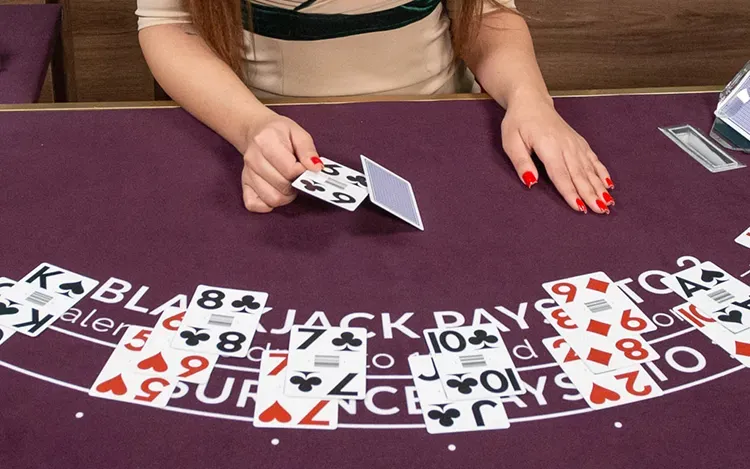
First, you need to assign values to each blackjack card. Commonly card counters will assign numbers 2-6 as +1, 7-9 as 0, and 10, J, Q, K, and Ace as -1. Maintain a running count using this system. To give an example, the count increases by one if the dealer displays a 6 (+1). The count is now 0 if you hold a 7 (0) and a Jack (-1). The count when the hand resolves is +1 if the dealer reveals 3 (+1) and subsequently hits for an 8 (0). Modern online blackjack uses more than one deck (shoe) and you need to take your running count and divide it by the number of decks in play. So if the total is 8 and there are 4 decks in play, then the running total is +2. Some players find that monitoring cards in this way is beneficial for their playstyle and bankroll management.
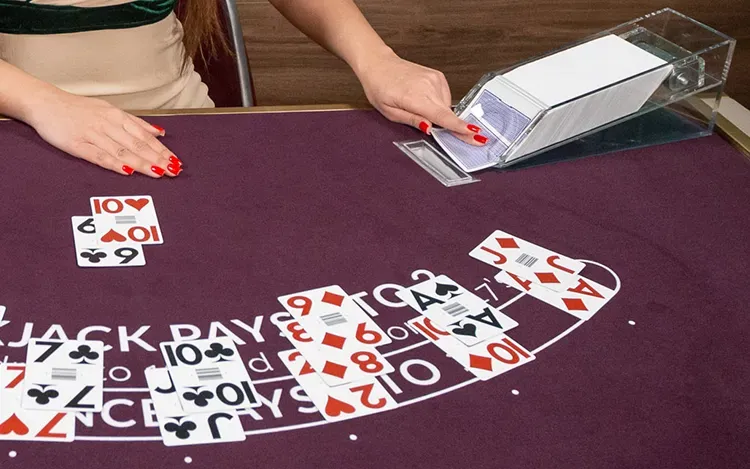
By keeping track of the cards which have been played (and therefore the cards remaining in the ‘shoe’; the blackjack deck) players remain aware of the possible hands and outcomes that are likely to occur. For example, if several rounds of blackjack have already been played, and no ace has appeared, a player who is counting cards would know that the possibility of an ace appearing in the next few hands is more likely, and can adjust their wager and approach accordingly.
Online blackjack variants can feature a wealth of side bets. Only the most common types are listed below:
The dealer's face-up card and the player's first two cards are used in 21+3 bets. These are based on the possibility that these three cards, like in poker, will form different combinations. For example, a Flush side bet is a blackjack bet in which all three face-up cards (your two and the dealer's one) will be the same suit. This outcome pays 5:1. Other 21+3 side bets include a Straight (pays 10:1), Three of a Kind (pays 30:1), Straight Flush (pays 40:1), and Suited Three of a Kind (Pays 100:1).
This is a blackjack bet on how many sequential sevens your hand will include. One seven pays 3:1. Two sevens pay 50:1 if the suits are different and 100:1 if their suits match. If you choose to hit and are dealt a third seven, the payout is 500:1 for different suits and 5000:1 for matching suits.
The blackjack player wagers that their cards will be a mixed pair (same rank but different colours) at odds of 5:1, a coloured pair (different numbers but same colour) at odds of 10:1, or a perfect pair (same colour and rank) at odds of 30:1.
This is a wager on whether the value of the first two cards in your hand will be more than or less than 13, with an Ace counting as one and a value of 13 usually making the wager void. Typically, this blackjack wager will pay 10:1.
This a blackjack wager that the King and Queen of the same suit will be the first two cards in your hand. A Royal Match pays out at a ratio of 10:1 in a single-deck game and 25:1 in a multi-deck game.
This is a blackjack wager that your first two cards will come from the same suit. A typical payout in a single-deck game is 3:1; in a multi-deck game, the payout is typically 5:2.
If a player believes the dealer will get a blackjack and the dealer's face-up card is an Ace, they can place an insurance bet
Online blackjack is a game of strategy and knowing what decision is best in the moment is important. There are a variety of online blackjack guide charts which can recommend the optimal move for the cards you’ve been dealt, see sample below. In general, the key blackjack strategy is as follows.
Some variants of online blackjack allow players to surrender, although not all do so check the game's regulations before starting. In essence, surrendering is folding your initial hand and getting half of your initial stake returned. The dealer will receive the remaining half.
To ‘hit’ is to receive another card, and in online blackjack you can choose to hit multiple times. To ‘stand’ is to take no more cards and end your turn. In general, you should hit if your total is 11 or lower as you won’t bust (go over 21) no matter the card you draw. If your total is above 11 and without an ace then consult with the blackjack guide chart and consider the dealer's face-up card to make your choice. The dealer will typically always hit on 16 or lower, and stand on 17 or higher.
Aside from the side bets mentioned in the previous section, players also may have the option to double down or two split their hands when playing online blackjack. If you believe you have a good chance of winning, you might choose to double down which is doubling your wager and accepting one more card. Players can split if the two cards they’ve initially been dealt are the same value. The matching cards are split into two separate hands and players will need to place another equal bet on this second hand.
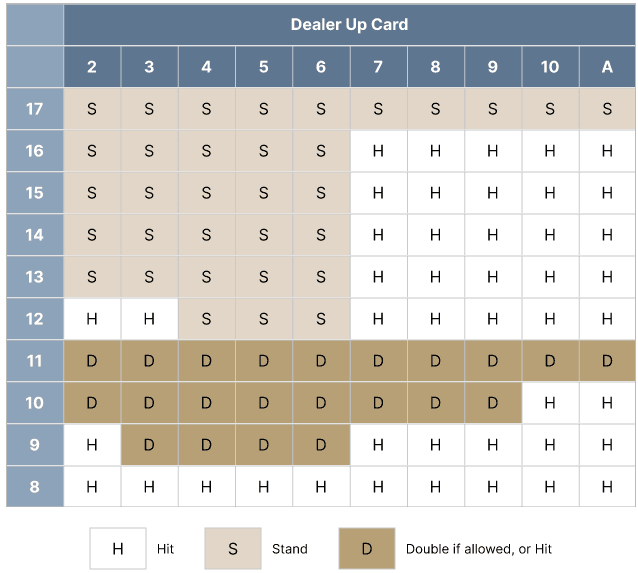
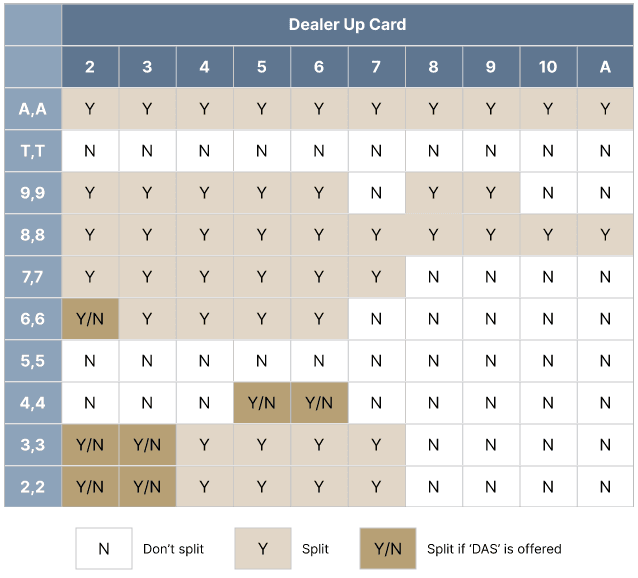
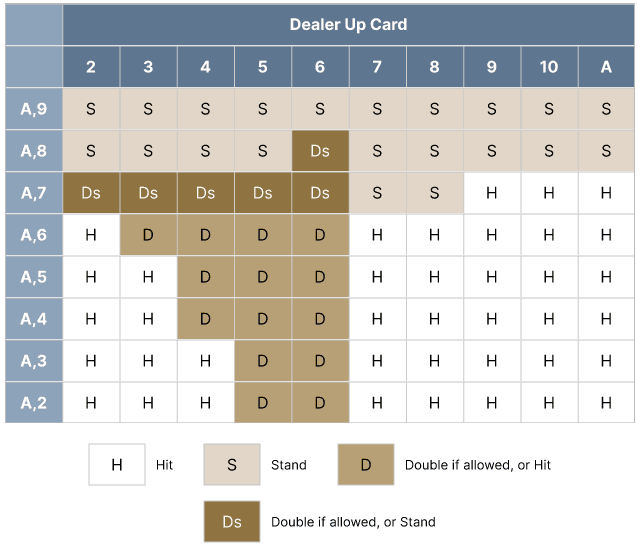
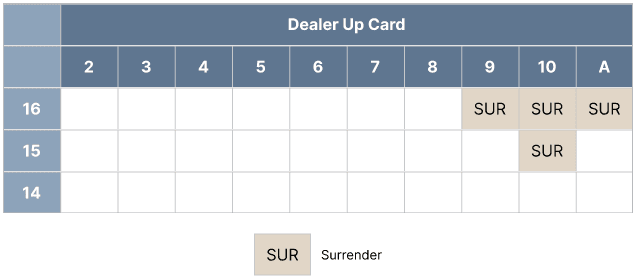
A variety of betting systems have been developed over the years, which can be applied to a variety of games such as online blackjack. Just like the strategies, betting systems are intended to serve as a guide for players and can help with factors such as bankroll management. They do not promise surefire wins or results.
The Fibonacci system is a well-known mathematical sequence which is also used in art and architecture. In this sequence, each number is the total of the two numbers that come before it (For example 1, 1, 2, 3, 5, 8, 13, 21, 34). Each time a player has a losing blackjack hand they change the units of their wager to the next in the sequence. In the case of a winning hand, they remain on the same unit. This system has similar drawbacks to the Martingale System.
The Martingale system is designed to aid blackjack players in recouping losses. When a player loses, they double their wager meaning that the next time they win it should value more than the amount lost. However, this method is risky, can lead to players chasing losses, and requires a large budget to utilise.
Every time a player loses a blackjack hand when utilising the d'Alembert system, they increase their wager by one unit. They deduct one unit from their wagers when they win. This method is designed to help players manage their bankroll over a longer gaming session.
Oscar's Grind was created for the game of craps, but it has also been effectively used in blackjack. If the player wins, this progressive betting system increases the bets by one unit. The wager is increased each time a player wins. This system aims to capitalise on a winning streak.
The goal of Parlay is to build a winning pyramid. The player will wager both the initial wager and any additional winnings when they win when playing blackjack. If the player loses, they will return to their initial wagering value and repeat the process.
In 1-3-2-6, also referred to as a split strategy in blackjack, bettors place consecutive bets of 1, 3, 2, and 6 units. Only when the player achieves a winning hand will they progress to the next unit in the system. The player returns to 1 unit each time they are dealt a losing hand.